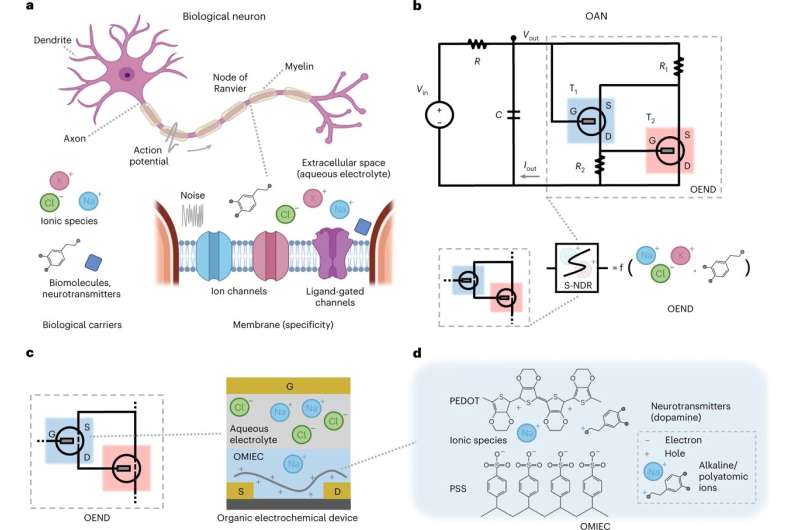Speaking the same language: How artificial neurons mimic biological neurons
Artificial intelligence has long been a hot topic: a computer algorithm "learns" by being taught by examples: What is "right" and what is "wrong." Unlike a computer algorithm, the human brain works with neurons—cells of the brain. These are trained and pass on signals to other neurons. This complex network of neurons and the connecting pathways, the synapses, controls our thoughts and actions.

Biological signals are much more diverse when compared with those in conventional computers. For instance, neurons in a biological neural network communicate with ions, biomolecules and neurotransmitters. More specifically, neurons communicate either chemically—by emitting the messenger substances such as neurotransmitters—or via electrical impulses, so-called "action potentials" or "spikes".
Artificial neurons are a current area of research. Here, the efficient communication between the biology and electronics requires the realization of artificial neurons that emulate realistically the function of their biological counterparts. This means artificial neurons capable of processing the diversity of signals that exist in biology. Until now, most artificial neurons only emulate their biological counterparts electrically, without taking into account the wet biological environment that consists of ions, biomolecules and neurotransmitters.
Scientists led by Paschalis Gkoupidenis, group leader in Paul Blom's department at the Max Planck Institute for Polymer Research, have now tackled this problem and developed the first bio-realistic artificial neuron. This neuron can work in a biological environment and is able to produce diverse spiking dynamics that can be found in biology and can therefore communicate with their "real" biological counterparts.
For this purpose, the group of Gkoupidenis realized a non-linear element made of organic soft matter, something that also exists in biological neurons. "Such [an] artificial element could be the key for bio-realistic neuroprosthetics that will speak the same language as biology, enabling the efficient restoration, replacement or even augmentation of the nervous system functions," says Gkoupidenis.
This allowed the researchers to develop for the first time a realistic artificial neuron that can communicate in diverse ways—chemically or via ionic charge carriers—in biological environments.
Their results have now been published in the journal Nature Electronics.



